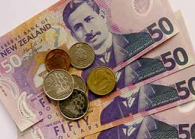
SINGAPORE (Aug 24): After reacting negatively to last week’s sudden devaluation of China’s renminbi, the Australian dollar and New Zealand dollar have since recovered pass their original levels before the news broke and are now even a little stronger against the US dollar.
“That is because people have started factoring in the possibility that a Fed Funds Rate hike in the US may not take place in September given that China must not be doing well if it is devaluing its currency,” says John Kyvetos, head of education at Oanda.
“People are thinking, China is one of the main economies fuelling the global economy, and if it is not doing well, then why would the US raise rates so soon? That is why we are seeing some weakness in the USD.”
On Aug 21, China released data revealing a fall in the HSBC China Manufacturing PMI to 47.1 from 47.8 in July, while output and new orders contracted at a faster pace to their weakest levels since 2011 and 2012, respectively. As a result of the lower demand, employment levels have also fallen to their weakest level since 2009.
“This is a good time to hold your positions on the AUD and NZD because things in the market are not clear. It’s not a good time to trade until we see exactly what China is trying to do with its monetary and currency policies,” says Kyvetos.
“Things are very unpredictable now and that’s why you have to adopt a wait and see stance. It’s a better idea to buy only after a clear trend starts to emerge when events like the US rate hike are made clearer.”
In the meantime, currency watchers should be paying attention to central bank announcements and follow the release of economic data in Australia, such as GDP levels, inflation and the unemployment rate.
For example, over the shorter term, the AUD might hold steady against the USD, given that the Reserve Bank of Australia has hinted that there will be no further rate cuts from the current 2% level.
Meanwhile, unemployment in Australia is going up as a result of the mining fallout. This is a slow process and the impact on the economy as factories close will only become apparent over the longer term. “So, we would take a short position on the AUD/USD over the long term,” says Kyvetos.
The New Zealand currency is likely to move in a similar direction. The price of milk, a major export of New Zealand, is down to a 13-year low. Meanwhile, interest rates in the country are still relatively high at 3%.
“So, it is likely that NZD could fall further than AUD against the USD because interest rates are higher in New Zealand, which gives the Reserve Bank of New Zealand more room to cut rates,” says Kyvetos, who believes the AUD/USD could fall below 67 cents and that the NZD/USD could drop below 60 cents in the next 12 months.
“We will only go long on the AUD/USD and NZD/USD when we are confident that they have sufficiently cut rates and when their economies start showing some strength.”
In the meantime, it could be a better idea to take a position in the AUD/NZD. “By taking the USD out of the equation, you eliminate the volatility associated with the rate hike. It is clearer that the AUD will strengthen against NZD because New Zealand has hinted that it is likely to cut rates over the short term,” says Kyvetos.